Samoa Flag Meaning
A red field with a blue rectangle in the upper hoist containing the Southern Cross constellation in white. The flag reflects Samoan heritage and its place in the South Pacific.
- Continent
- Oceania
- Adopted
- 1949
- Ratio
- 1:2
- Colors
- red, blue, white
- Designer
- Officially adopted by the Legislative Assembly of Samoa
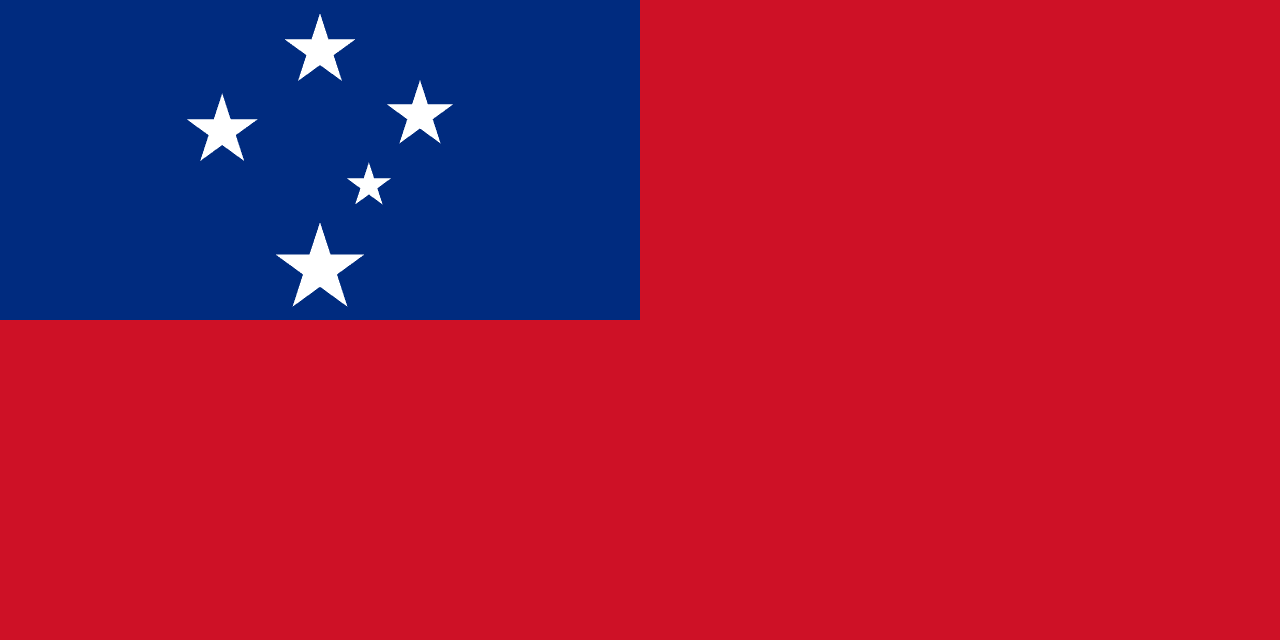
Symbolism
Red Field: Represents courage and the sacrifices of the Samoan people.
Blue Canton: Symbolizes freedom and the Pacific Ocean.
White Stars: Depict the Southern Cross constellation, a guiding symbol of Samoa’s geographic location in the Southern Hemisphere.
History
- Pre-European Era: Samoa was settled by Polynesians around 3,000 years ago, developing a complex chiefdom system (fa’amatai).
- 1899: Germany and the U.S. divided the Samoan islands; Western Samoa came under German control.
- 1914: New Zealand occupied Western Samoa during World War I, later administering it under a League of Nations mandate.
- 1949: Western Samoa adopted its flag under New Zealand administration.
- 1962: Western Samoa became the first independent Polynesian nation, retaining the flag.
- 1997: The country officially shortened its name from Western Samoa to Samoa.
Trivia
- Samoa was the first Polynesian country to regain independence in modern times (1962).
- The red field of the flag emphasizes both courage and the cultural importance of family sacrifice.
- Samoa skipped a day in 2011 when it shifted its time zone to align with Australia and New Zealand for trade.
- Rugby is the most popular sport in Samoa and a major part of its national identity.
- Traditional tattooing, called 'tatau,' is an important Samoan cultural practice with deep symbolic meaning.
Related Countries
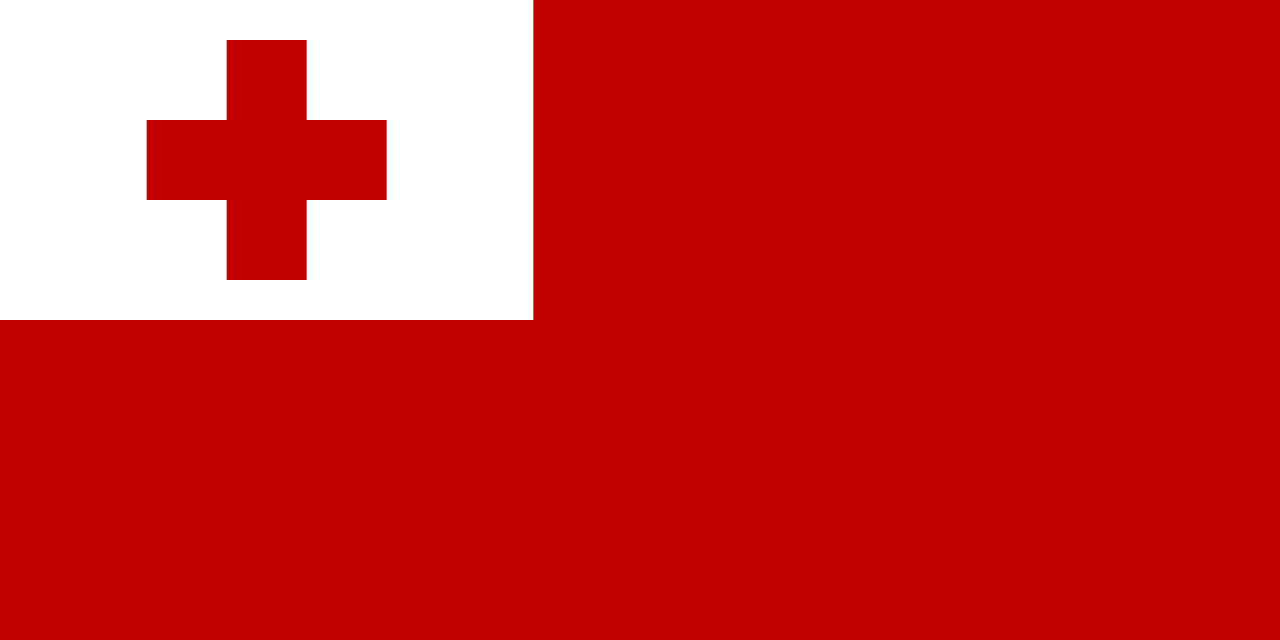
Tonga
Oceania
A red field with a white canton containing a red cross, representing the blood of Christ and the sacrifice of Jesus for mankind, the purity of Christian faith, and the deeply Christian identity of the Kingdom of Tonga as a Pacific island nation that was never colonized.
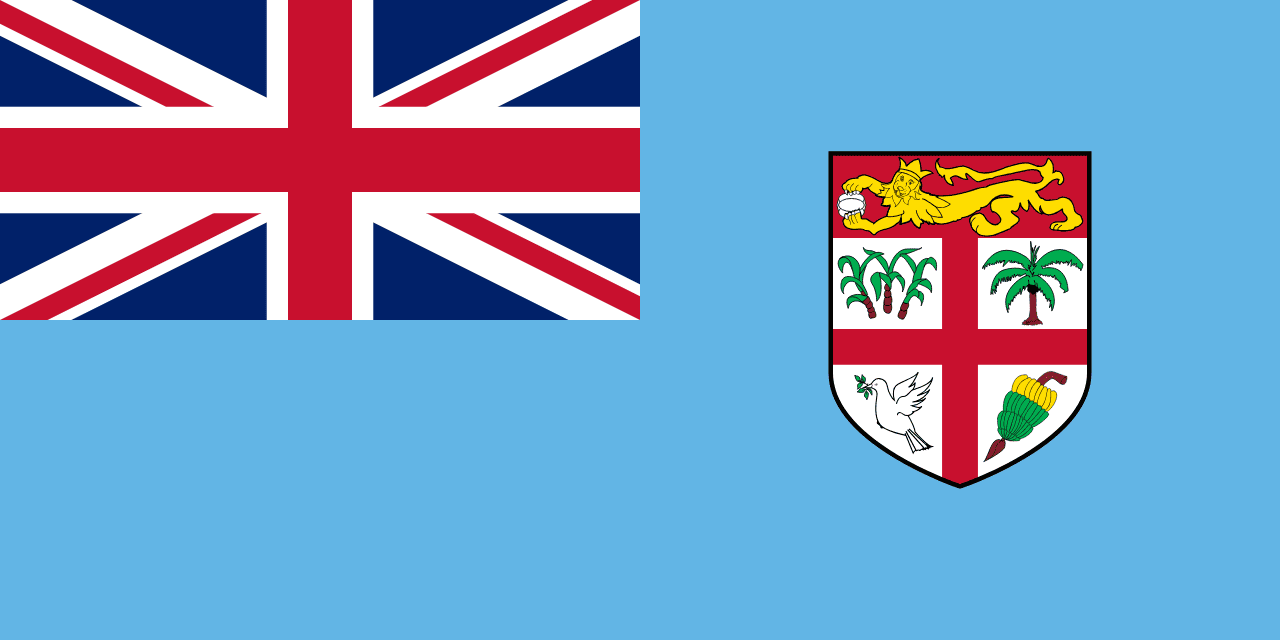
Fiji
Oceania
A light blue field with the Union Jack in the canton and Fiji's coat of arms on the fly side, representing the Pacific Ocean, British heritage, and the agricultural and maritime traditions of this island nation.
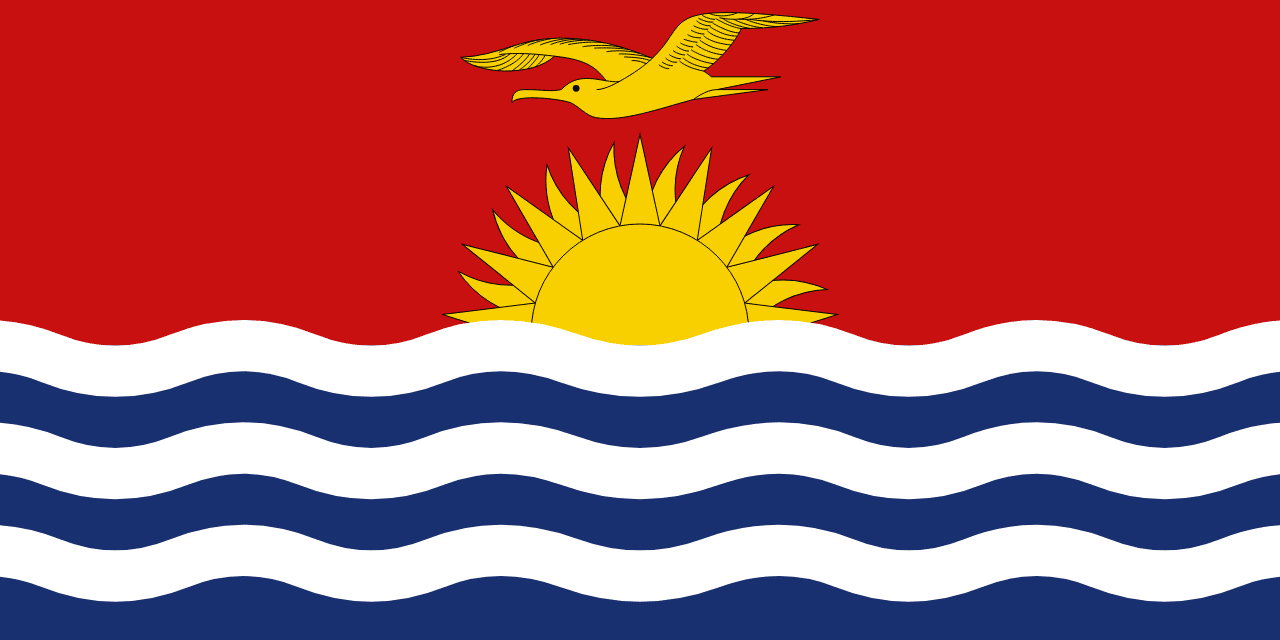
Kiribati
Oceania
A red upper field with a golden frigatebird flying over a rising sun above blue and white wavy stripes, representing the Pacific sunrise, ocean waves, and the unique geography of this coral atoll nation spread across the international dateline.
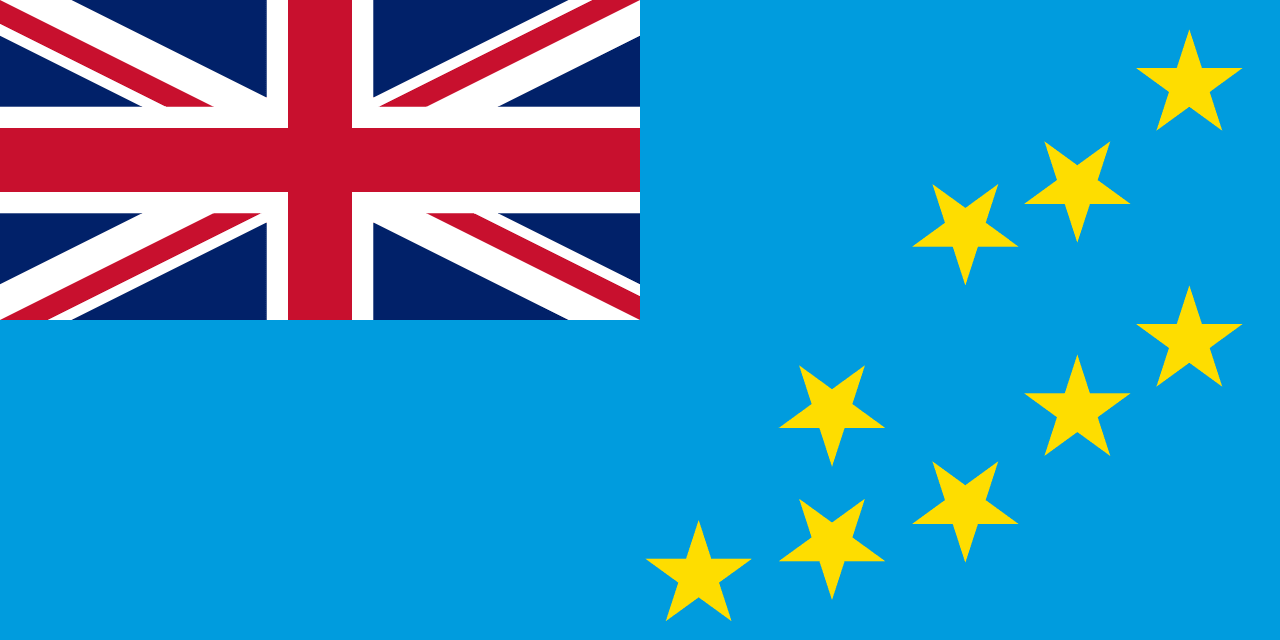
Tuvalu
Oceania
A light blue field with the Union Jack in the canton and nine yellow stars representing the nine atolls of Tuvalu, symbolizing the Pacific Ocean that surrounds the islands, the historical connection to Britain, and the geographical arrangement of the island nation in the central Pacific.
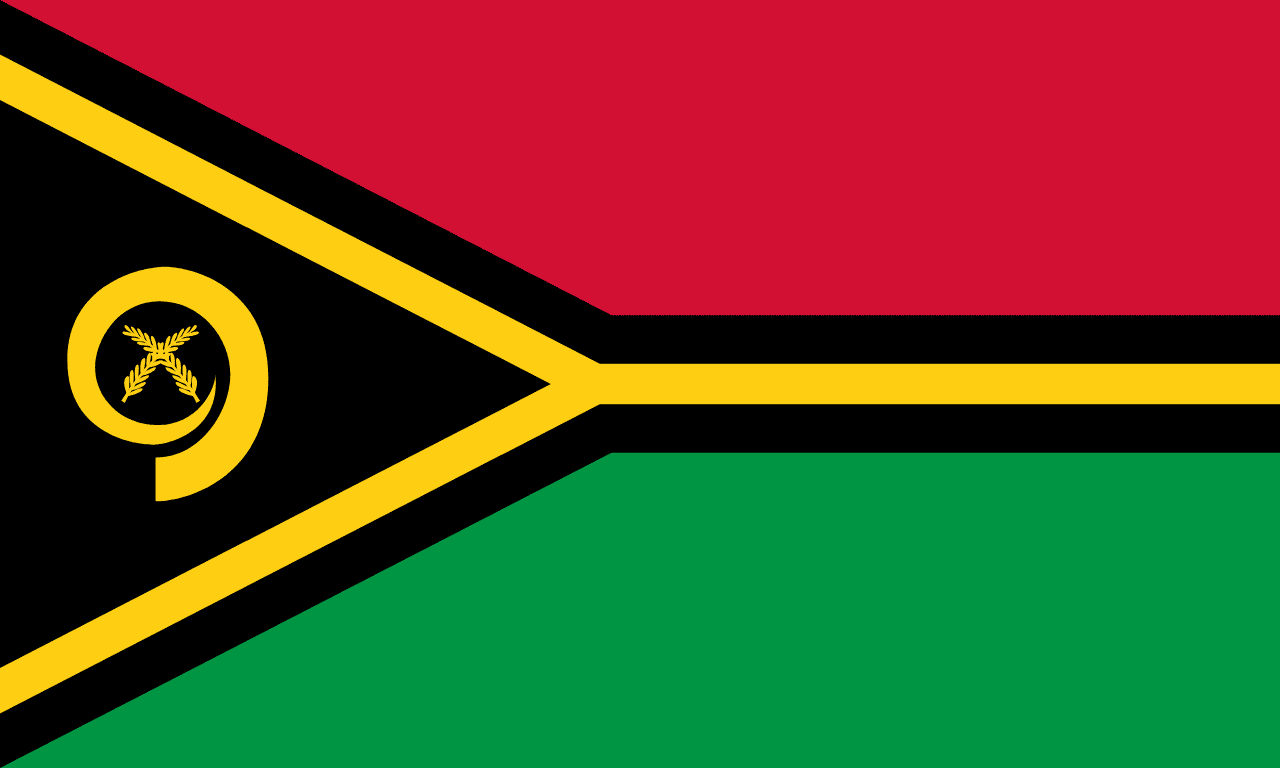
Vanuatu
Oceania
Red and green horizontal bands separated by a black stripe edged in yellow, with a yellow Y-shape extending from the hoist containing a boar's tusk and two crossed fern leaves, representing the blood of sacrifice, the rich soil, the Melanesian people, enlightenment, and traditional Melanesian values and culture.
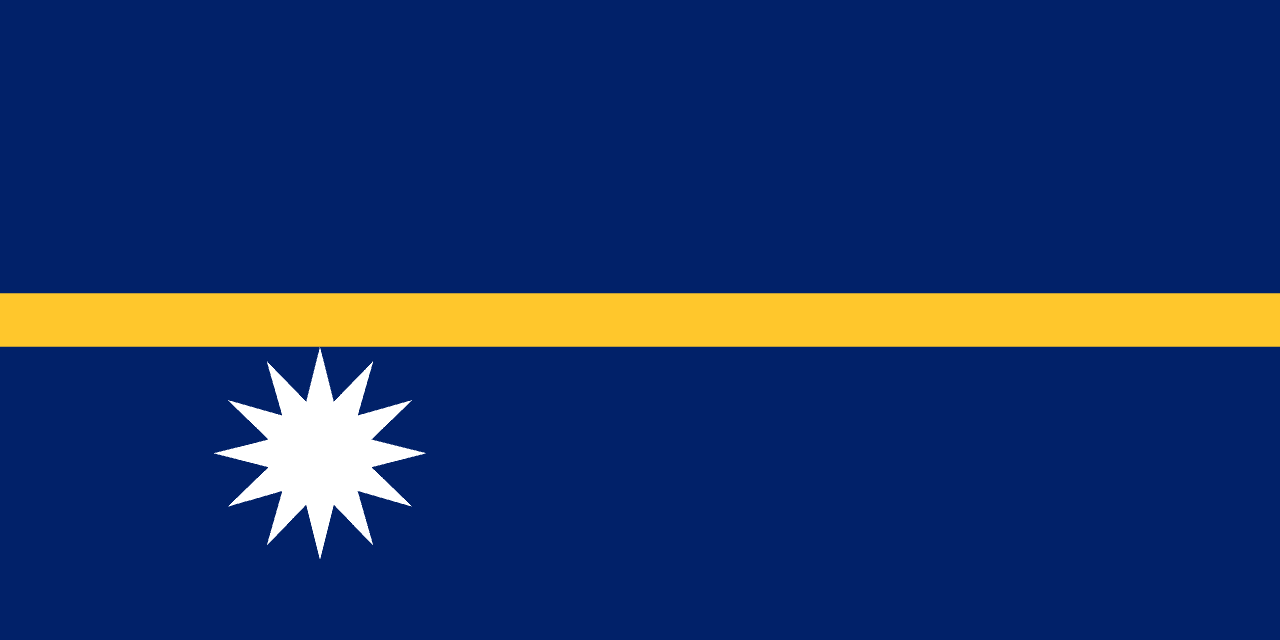
Nauru
Oceania
A blue field with a horizontal yellow stripe across the center and a white twelve-pointed star below the stripe near the hoist. The design reflects Nauru’s position just south of the equator and its cultural identity.